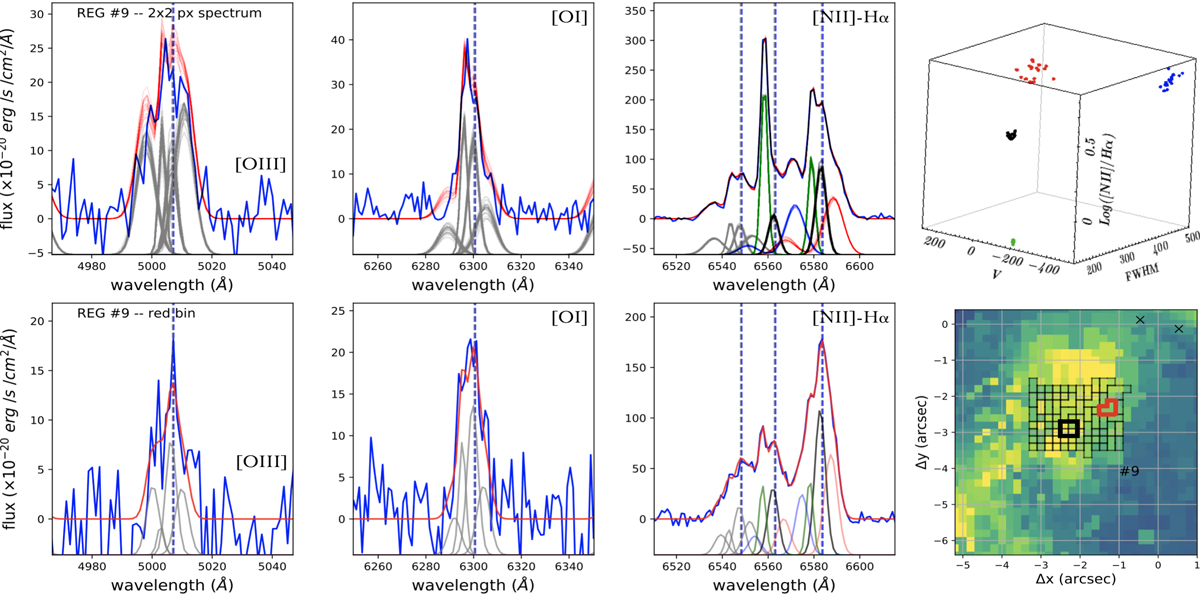Fig. 7.

Illustration of the profile decomposition method. Top: first three panels show the spectra in the vicinity of the [O III] (left), [O I]λ6300 (centre), and [N II]+Hα lines (right). The red curves represent the best-fit models obtained from 500 MC trials. For all but the [N II]λ6583 and Hα lines, we show the Gaussian profiles used to reproduce the spectrum with grey curves. Different colours are used for the Hα and [N II]λ6583 lines to distinguish the different kinematic components. Dashed grey and blue lines mark the Arp220 systemic and the local stellar velocity, respectively. Right-hand panel: parameter space V − FWHM–[N II]/Hα for the same kinematic components, highlighting the clear separation between the four Gaussian sets. Bottom: best-fit results for one of the nearby Voronoi bins, obtained with the kinematic constraints from the 2 × 2 spectra shown in the top panels. Bottom-right panel: velocity dispersion map with the Voronoi bins (black outlines) associated with the above-defined kinematic constraints; the black (red) contours mark the spaxels from which the top (bottom) spectra have been extracted.
Current usage metrics show cumulative count of Article Views (full-text article views including HTML views, PDF and ePub downloads, according to the available data) and Abstracts Views on Vision4Press platform.
Data correspond to usage on the plateform after 2015. The current usage metrics is available 48-96 hours after online publication and is updated daily on week days.
Initial download of the metrics may take a while.


